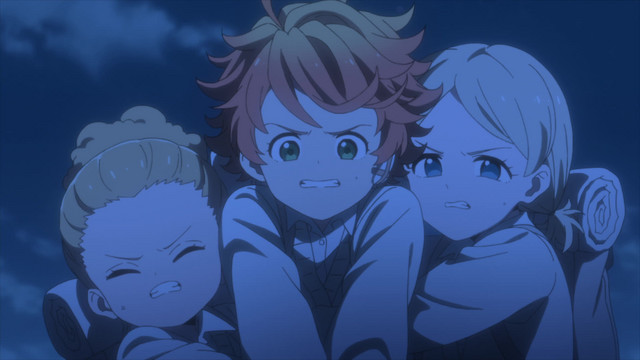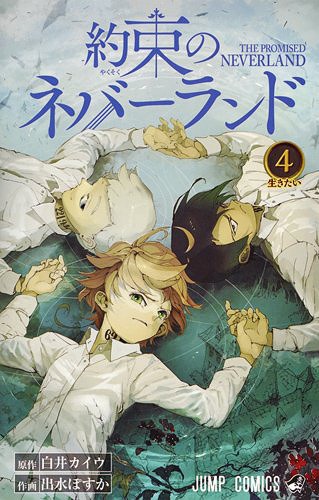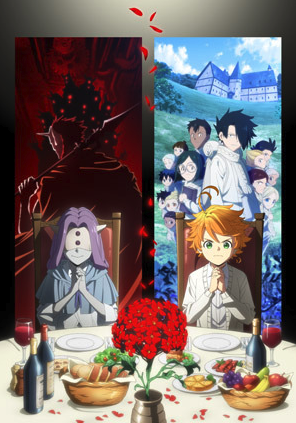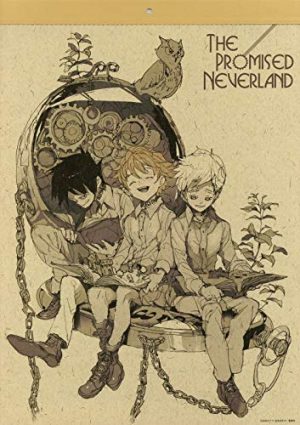
The Promised Neverland has caught the world by surprise. The story of a group of orphans who, after being told all their lives that the world outside the gates of their home is dangerous and hostile to humans, discover that the biggest threat to their survival is right there with them: Their house is nothing but a glorified farm where they’re the cattle being raised to be sacrificed as meat for demons. But before the anime, there was an amazing manga and now is a great time to talk about some of the differences between the two.
While the most obvious difference is that the manga continues from where the anime left off, don't worry, we won’t talk about what happens behind the wall. But if you haven’t finished the anime, be warned that there will be spoilers for it below.
-- Anime Spoilers Ahead --
The Children Have a Longer Time to Plan Before Sister Krone Arrives
In the anime, we barely have time to adjust to the reality that the children are cattle and the kids manage to recruit Ray with the idea of saving all the 37 orphans in Mom Isabella's care when we're presented with a new obstacle in the form of Sister Krone and a new baby. However, the manga is a bit more paced, and so Sister Krone doesn't make her appearance until chapter 5, giving Emma and Norman more time to start planning as well as to realize exactly how little they know about the world outside.
Thanks to this, the readers get to understand the world where the kids live a bit better, which seems to have been the same as ours until something happened in 2015. There’s more attention given to the trackers in the manga too, as Ray posits that they really don’t know how much technology had advanced past the books they have in the library.
Sister Krone Has No Doll with Her and She Monologues Less
Speaking of Sister Krone, she is as terrifying as she is in the anime but in a different way. Unlike her animated version, she doesn’t have a doll to bounce her thoughts off of, and more importantly, she is not given to monologue and show her emotions outwardly. Yes, we get to see all her plans and weird faces, just as in the anime, but they’re all inside her head. The manga makes it clear that her odd behavior is only limited to when she chases the kids in the game of tag, and a little later as she’s looking for evidence to show that Isabella has lost control of her house.
She also spends a bit longer in the house but ends up in the same place as in the anime: betrayed by the system she thought she could trust and leaving behind the seeds for the children to succeed.
There’s More Build up to the Final Escape
Because the manga dedicates 37 chapters to the first arc, as opposed to the 12 episodes that the anime had for their first season, everything has more time to develop. In particular, we get to see and feel the months between Norman’s early shipment and Ray’s birthday and how both Ray and Emma seemed defeated.
The escape itself gets almost 4 chapters, so the twists are more spaced: We get to believe that Ray immolated himself for a bit longer and Emma’s act of desperation to distract Mom is away from the flames, making her tears feel more real and fool some readers into believing that Ray had immolated himself. While the anime did an excellent job adapting the escape, the long chapters that the manga took to narrate the same events helped to showcase every child's contribution better.
Mom Doesn’t Reach Emma and the Kids in Time to See Them Go.
Perhaps the biggest change between the anime and the first arc of the manga is how the escape ends. In both versions, Ray is confronted by Norman's image teasing him about how the younger kids were not a burden and the escape is cut with scenes of Mom's past as she races to catch them. But unlike the anime, where she reaches the group just as Emma is the last to run away, in the manga, she arrives when the children are already hidden in the forest and doesn't get to see them.
This makes her goodbye, as she returns to the children that were four and under and stayed at the house, a bit more heart-wrenching. It wasn’t Emma’s steely gaze what made Mom realize it would’ve been nice if she could have loved her kid, it was the understanding that, unlike her, Emma and her siblings were ready to jump into the unknown.
Final Thoughts

The first season of The Promised Neverland was a fun rollercoaster ride that ended in an optimistic note as the children run to their freedom. However, the manga has continued long past that, and at 127 chapters, it’s still ongoing. That means a future season can be done without straying much from the manga plot, and we can’t wait to see how they continue the story.
But we want to know your opinion: Have you read the manga? If so, what are your thoughts on the adaptation? If not, do you want to read it now or do you want to be surprised completely when and if a second season is approved? Please let us know!
Recommended Post




